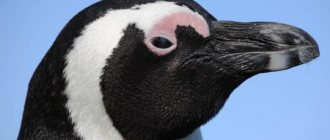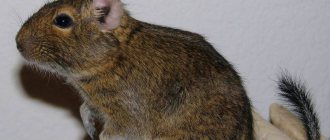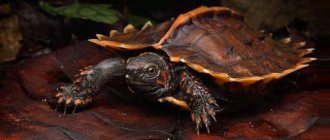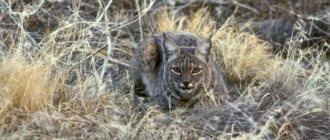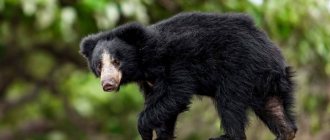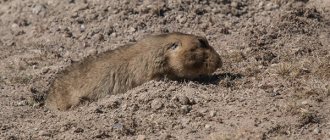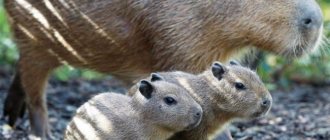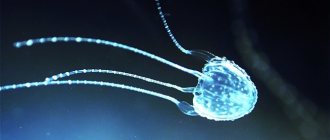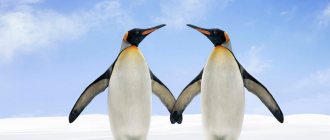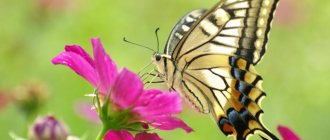Caring parents
Most species of these birds create nests for their chicks from pebbles and old feathers. Emperor penguins are an exception to this rule. They incubate one egg during each breeding season, holding them on the tops of their legs. Under the loose fold of skin there is an area without feathers, but with many blood vessels, which allows the future chick to be kept warm.
Penguin parents, both female and male, care for their offspring for several months until the chicks become strong enough to forage for food on their own.
Where do penguins live?
The ancestors of modern penguins inhabited territories that had a temperate climate, since Antarctica did not yet look the same as it does now. Gradually, climate changes occurred in these territories, as a result of which the natural habitats themselves changed. Antarctica moved closer to the South Pole, causing mass migration of animals, but penguins were able to successfully adapt to the harsh conditions of modern Antarctica.
The warmest habitats for penguins are the Galapagos Islands, which are located on the equator.
The main natural habitats of penguins are the waters of the southern hemisphere and the coastal waters of Antarctica and New Zealand.
Penguins are birds considered one of the most cold-loving individuals, therefore the main condition for their habitat in the equatorial zone is the presence of a cold current. Penguin habitats are limited to 45-60 degrees south latitude, making Antarctica and its surrounding islands one of the most popular habitats for penguin populations.
Plump "men" are always held in high esteem
In some species, the male penguin incubates the eggs, and the females go on a hunt, which can last up to several weeks. Therefore, the females of these birds, as a rule, do not look at fighting skills or a loud voice, but at the fatness of their future partner. And they choose males with a sufficient supply of fat who can live all this time without food.
The doctor explained why it is important to monitor your pace when jogging
Bobo, ruffles, patchwork: trendy denim items this spring that suit everyone
The age difference does not bother them: the young wife of Vladimir Gostyukhin
Natural enemies of penguins
Recommended by topic
Flying Squirrel Chinchilla Tiger
Penguins usually live in isolated areas and, while on land, they protect themselves from the invasion of various predators. Therefore, the main danger that can lurk for both adults and their offspring are considered to be animals that people bring to this area due to various circumstances. However, penguins cannot be called defenseless. For self-defense, they have a sharp beak and strong fins, which are powerful weapons.
Other birds, such as petrels or gulls, become typical problems for penguins. They attack chicks or unhatched offspring, devouring penguin eggs if the parents do not have time to protect them.
Penguins are distinguished by great forethought and caution. They will never dive into the water until they have examined the entire coastline for potential danger.
To do this, penguins can gather in groups and wait, afraid to dive into the water. It may take about a minute until the first penguin finally decides to dive.
When penguins are at sea or in the ocean, they become potential prey for killer whales, sharks, and fur seals. Seals, which often patrol the sea freely, often find themselves in close proximity to a penguin colony. At the same time, seals have a great advantage associated with their maneuverability, and therefore it is especially convenient for them to hunt these birds.
First mentions
The first mention of penguins was made by the navigator Antonio Pigafetta, who was on board Ferdinand Magellan's ship around the world in 1520. The crew discovered the animals, likely near Punta Tombo in Argentina. In his notes, Antonio called the penguins “strange geese.”
An earlier anonymous journal entry from Vasco da Gama's 1497 voyage around the Cape of Good Hope mentions flightless birds the size of ducks.
Penguins lost the ability to fly sixty-two million years ago
Initially, these birds could fly, but over time they began to swim more actively and, as a result, lost the ability to rise into the air. The most amazing thing is how long ago penguins began to strive for life in the water. The oldest species discovered during excavations lived sixty million years ago. And by that time they could not fly, although they were not as well adapted to life in water as modern ones. Scientists believe that ancient penguins moved along the surface of the water.
Loss of losses
In 2014, an outbreak of an unusual disease was reported in which young penguins lost their feathers, resulting in their death. There were cases in Antarctica and South Africa. At first, only two sick penguins were seen in a colony of 14 thousand individuals. Scientists decided that if there are only two sick people out of 14 thousand individuals, then the disease is less contagious. Most likely, it was caused by some kind of papillomavirus, which causes diseases of the beak and feathers by disrupting the synthesis of keratin. In general, there were no mass killings of penguins.
Penguins living in Antarctica and on the islands live in almost sterile conditions. In addition, each organism has adaptations to its habitat. If there are pathogenic bacteria in the north, then the penguins will be resistant to them, but if they are moved to a completely different environment with other pathogens, they may die. For example, in the mid-1970s, a group of penguins from the Zvenigorod Biological Station of Moscow State University repeatedly ran down the Moscow River. A little later, all the penguins died from pulmonary diseases.
Penguins that live in zoos are kept in sterile cages, with air pumped through special filters.
Appearance and structure
The story about penguins should begin with a description of their appearance. The body of birds is characterized by a streamlined shape. Developed muscles and skeletal features allow the creatures to move quickly in the water, working with their wings like propellers. The animals have a well-defined sternum with a keel. The bones of the shoulder girdle and forearms are connected at the elbow straight and motionless.
Many penguin species have short femurs, fixed knee joints, and backward-positioned legs. These nuances explain the funny waddling gait. Large feet are webbed. Sometimes birds rest standing on their heels. Their tail is shortened, since their legs perform the steering function . The creatures also differ from other birds in their increased bone density. Their bones do not have internal cavities. Therefore, a heavy skeleton allows animals to easily dive to considerable depths.
Penguins' numerous feathers resemble fur. Almost all representatives of penguins have a blue-gray plumage that gradually turns black on the back and white on the belly. This color serves as a camouflage. Cubs usually have gray or brown feathers; in some varieties the belly and sides are characterized by a white color. Penguins change plumage after hatching eggs and raising their young. Birds cannot swim until they grow new feathers. The rigid plumage on the tail serves as additional support when walking.
Because penguins are exposed to cold temperatures, they have a thick layer of fat of 2-3 cm under their three-layered plumage. It is this that provides thermal insulation. The air in the layers of feathers also protects animals from heat loss in the water.
Description and features
The king penguin reaches a height of 1 m. Its beak is thinner and more graceful than that of the emperor. The beak color is pinkish-yellow. The weight of the king penguin ranges from 9 to 17 kg. The female is slightly smaller, the male is larger. The bird's head is painted black. On the sides, closer to the back of the head, there are bright orange spots with a yellow tint.
The throat is painted in the same color, in the form of a frill, brighter at the top, paler below, gradually lighter to white. The bird's belly is all white. The back and fins are black with a silver tint, the upper and lower parts of the body are separated by a black stripe.
The body is dense, thickened in the middle, becoming sharper at the top. The head is small, the beak is also small, straight, strong, with sharp edges. The wings are more like fins, even the feathers on them look like scales. The feet are dark blue and webbed for swimming.
The pupil of the eyes can contract and enlarge very quickly, so the bird sees perfectly in water, even at a depth of 100 m. The cornea of the eye is flat, which makes them slightly myopic on land. The ears, like those of all birds, are barely visible.
When diving, they are covered with long feathers to keep water out. They communicate on land using sounds reminiscent of a rattle or trumpet whistle. Underwater communication is silent.
The king penguin in the photo is truly an august person. Its plumage is similar to a mantle. Royalty is added by the high-headed posture and impressive body shape. Being in polar cold conditions, this inhabitant of the southern latitudes survives due to the multi-layered nature of its plumage.
There can be up to four of these layers, they are quite dense, and the uppermost one is saturated with fat, therefore impenetrable to ice water. The three bottom ones serve for thermal insulation. Amazing wetsuit.
The chick does not have a top layer of feathers, and the other three are more like warm brown fluff. It warms the baby, but does not save him in the water. Therefore, they do not enter the icy waters of Antarctica until they are two years old.
This creature can even drink salt water. The melting snow is not enough to quench the thirst of hundreds of thousands of colony inhabitants. The ice is too hard and difficult to break with its beak. Therefore, nature took care of amazing creatures.
She equipped them with special glands located at eye level that filter salt from the blood. They expel salt through their nostrils in the form of a highly concentrated solution that drips from the penguin's beak.
Physiology also allows him not to sweat or excrete urine. They replace it with uric acid in the form of a cloudy white liquid. These birds have a very careful and economical attitude towards liquid.
Raising chicks
Penguins have offspring at 2-4 years of age. Males build a nest and then attract females with their calls. Animals often change partners. However, some mate with the same individuals with whom they produced offspring the previous year.
Usually parents hatch eggs on their feet in turns. Laying occurs in spring or summer. In cold regions, animals hatch one egg; in warm climates, penguins can have several babies. Since individuals keep in colonies, in many species laying occurs almost simultaneously. Unfortunately, it happens to young couples that their chicks do not hatch. Hatching success increases with age.
In the first few weeks after birth, the chicks are under the care of one parent while the other goes off to look for food. When the cubs grow up, they are sent to a “kindergarten”: they are looked after by young individuals or penguins who do not have children. And both parents go hunting. Babies eat semi-digested food and milk, which their parents secrete from their stomachs. The chicks hide from the cold in the lower folds of the adult's abdomen.
Juveniles of the larger penguin species develop a brown coat that later sheds unevenly. When an individual acquires the appearance characteristic of adults, it begins to lead an independent lifestyle.
Popular varieties
Penguins are considered the only modern family in the order Penguinidae. The group includes 6 genera and 18 varieties of these creatures.
Popular types of penguins with a brief description:
- Imperial. Representatives of this species are considered the most majestic representatives of their family. Their weight can reach 40 kg with a height of 110 cm. There are yellow-orange spots under the neck and on the cheeks. This species lives on the coast of Antarctica.
- Royal. Penguins are similar in appearance to emperor penguins, but they are smaller in size. The average weight ranges from 10-16 kg with a height of 80-90 cm. There are bright orange spots on the cheeks and under the neck. King penguins inhabit islands in the south Atlantic Ocean.
- Adele. Birds grow up to 60−70 cm. The average weight is about 6 kg. The main feature of penguins is the white rings around their eyes. Adélie inhabit Antarctica and nearby islands.
- Northern Crested. The height of the animals does not exceed 60 cm. Weight is 3−4 kg. Penguins have tufts of black and yellow feathers on their heads. Penguins live on islands in the Atlantic Ocean.
- Golden-haired. Birds grow up to 60−70 cm, and their weight does not exceed 7 kg. The penguins' heads are decorated with tufts of golden feathers. This species lives on the islands of the Atlantic and Indian Oceans.
- Papuan. The height of individuals can reach 90 cm. On average, the Gentoo penguin weighs 8-9 kg. A distinctive feature of the birds is their beak, colored in orange and red tones. Animals live in Antarctica and on the islands closest to it.
- Magellan. Penguins, growing up to 80 cm, have one or two black stripes around their necks. They live in the Strait of Magellan area.
- Antarctic. The flightless birds grow up to 70 cm in height and weigh 5 kg. The head of the penguins is decorated with a black stripe. Animals inhabit the coast of Antarctica.
- Small. Representatives of this variety reach a height of 40 cm. They weigh about 1-2 kg. Birds inhabit the coasts of Australia, Tasmania and New Zealand.
The tallest and largest representatives of the penguin family are the emperors. Little penguins are considered the smallest.
High Order Predators
Penguins are still closer to the end of the food chain; they are high-order predators. Why is that? Because no one specifically feeds on penguins. Yes, there are higher predators, but they are not specialists. While the penguins themselves are specialists. Some penguins eat fish, and some eat krill; and their mouthparts are adapted to the type of food. For example, if you try to catch a tea leaf with two fingers, you will most likely fail because it will slip out. And in penguins, when they grab a krill, their cheekbones can move apart, and the volume of water remains constant, and the bird grabs the krill. Then, with the beak closed, the cheekbones move, squeezing out the water. This mechanism is somewhat similar to the feeding of minke whales. Penguins can also spread their cheekbones, creating a current of water, and suck in small objects at once. Emperor and king penguins are more specialized in fish. They have a thin, long beak and when it closes, the buoyant currents are minimal.
Rescue in Antarctica
This year, +20 degrees Celsius was recorded in Antarctica. Warming is dangerous, first of all, for emperor penguins, since they breed exclusively on ice shelves, and if the ice melts, the species may disappear. Those who breed on land are safe. Birds are also threatened by oil pollution. When oil products wet the plumage, hypothermia and death occur. The plumage can be washed from oil, but poisoning with oil products leads to disruption of the liver, as a result of which even washed birds die from liver dysfunction. But in Antarctica there are no special communication routes or tanker routes.
Penguins can get caught in abandoned nets in Antarctica and ingest plastic garbage, of which there is little in Antarctica - it is prohibited here to throw away any garbage from ships, except organic.
For penguins that do not live in Antarctica, there is another danger - the introduction of mammals, for example, mice and rats - they eat their offspring. This is a serious problem that New Zealanders and Australians are actively struggling with. But Antarctica is protected from this, since mammalian predators will not survive the winter.
Roughly speaking, the penguins living in Antarctica are relatively safe, except for the emperor penguins, which may become extinct.
Dmitry Kuznetsov, Phenological Network of the Russian Geographical Society
Nutrition
The emperor penguin searches for food only in the ocean. He feasts exclusively on seafood - squid, fish and small crustaceans.
Birds do not go hunting alone. They form a group and catch prey in the ocean. When they see a school of fish, penguins quickly catch up with them and attack.
Birds tear small fish with their beaks in the water and immediately eat them. Large prey is more difficult to deal with. Penguins swim to the surface with the fish and tear them into small pieces.
During hunting, birds descend to a depth of over 0.5 km and pick up speeds of up to 6 km/h. When diving into the ocean, birds navigate using their vision. They see perfectly and can spend 15 minutes at a depth.
Emperor penguins lay only one egg during the breeding season
During the cold Antarctic months, emperor penguins begin to breed and each female can lay only one egg. This is due to the fact that protecting it from the cold is already difficult, so more eggs would simply disappear. The emperor penguin is the fifth largest bird on the planet. During incubation, males lose a quarter of their weight. However, only a fifth of all chicks survive the first year of their life.
On average, emperor penguins live up to twenty years, while scientists believe that some can live up to fifty. As a result of high juvenile mortality, the average age of 80% of penguins in the population is five years or more.
Penguins can dive five hundred meters
The largest penguins in existence today, emperor penguins, are capable of things that are inaccessible to others precisely because of their size. For example, when diving, they are able to dive to a depth of five hundred meters. To compensate for the pressure they have to withstand, their bodies have certain features. For example, they have dense bones - in other birds they are filled with air. This helps minimize barotrauma. During a dive, the pulse is reduced as much as possible to save oxygen, and the emperor penguin's blood has a special composition that allows the body to function longer without breathing.
Interesting facts
In textbooks and some books, information on the topic of penguins is given briefly. But there are many interesting facts about the representatives of this family that are suitable for the text of an abstract or essay:
- Penguins are the only birds that can swim, but cannot fly.
- After the birth of the cubs, the number of individuals in the colony can reach 5 million.
- Polar varieties of flightless birds can withstand temperatures down to -60°C.
- Representatives of the adélie species live on the ice, and they move to land only to start a family.
- Golden-crowned penguin babies are guarded and fed by the males while the females hunt and fetch food.
- The fastest penguin species is the Gentoo. These animals can move in water at a speed of 35 km/h.
- Representatives of the yellow-eyed penguin species spend most of their lives on land. They try not to get close to the water, since they have many large sea enemies. Also, these birds do not live in colonies, but in independent pairs.
Penguins are considered fascinating and amazing creatures. Many species even allow people to approach them. Therefore, stories about feeding these birds by hand are mostly true.
I can walk to the sea
Flight is a very energy-intensive method of transportation. For this reason, some large birds, such as bustards and swans, prefer to swim away or leave in case of danger, and will fly away only as a last resort.
About penguins, it is believed that they evolved in the same places where they live now. These are Australia, New Zealand and Antarctica, which at that time was not so covered with ice. There were no predators here. For example, in New Zealand there were only one or two species of bats among mammals. And then people came, dogs came with them, after which Europeans began to populate the lands, and with them came mammalian predators. Before this, New Zealand was a “bird country”. There were also no land-based predators in Antarctica.
Why fly? There are no predators, you can even walk to the sea! The appearance of flightless birds is the result of evolution without predators, and in the case of penguins, evolution was also long. Therefore, they became a kind of pinnipeds and dolphins.
Penguins can endure cold temperatures of minus seventy degrees Celsius by congregating close to each other.
Emperor penguins are able to withstand the harsh Antarctic climate through adaptation. They have a thick layer of feathers that help reduce heat loss, and penguins can control blood flow to warm certain parts of the body. Most importantly, to survive, they work in groups, huddling together in a dense crowd, huddling together and keeping each other warm. The penguins don't just stand, they constantly change places so that no one has to stand all the time at the edge, where it is coldest, and no one always remains in the center, where it is warmer.
Detergent: scientists reveal how you can use coffee grounds
The mesmerizing beauty of Ossetian women: photos
Renewing an old countertop with concrete: it looks modern
Penguins live in colonies of two hundred thousand birds.
Emperor penguins form groups to survive, but other species prefer to live together. Golden-haired penguins love company more than others - they can live in colonies of several hundred thousand birds. As a result of this habitat, penguins have developed a unique way of communicating with other birds. They do not have a complex language, but they do have a specific vocal system with which males and females can communicate.
Historical decline in influenza incidence due to pandemic
For two years I called you “you”: why was it difficult for Menshikov’s young wife to be with him?
Fermented soybean dishes prolong life, scientists say
